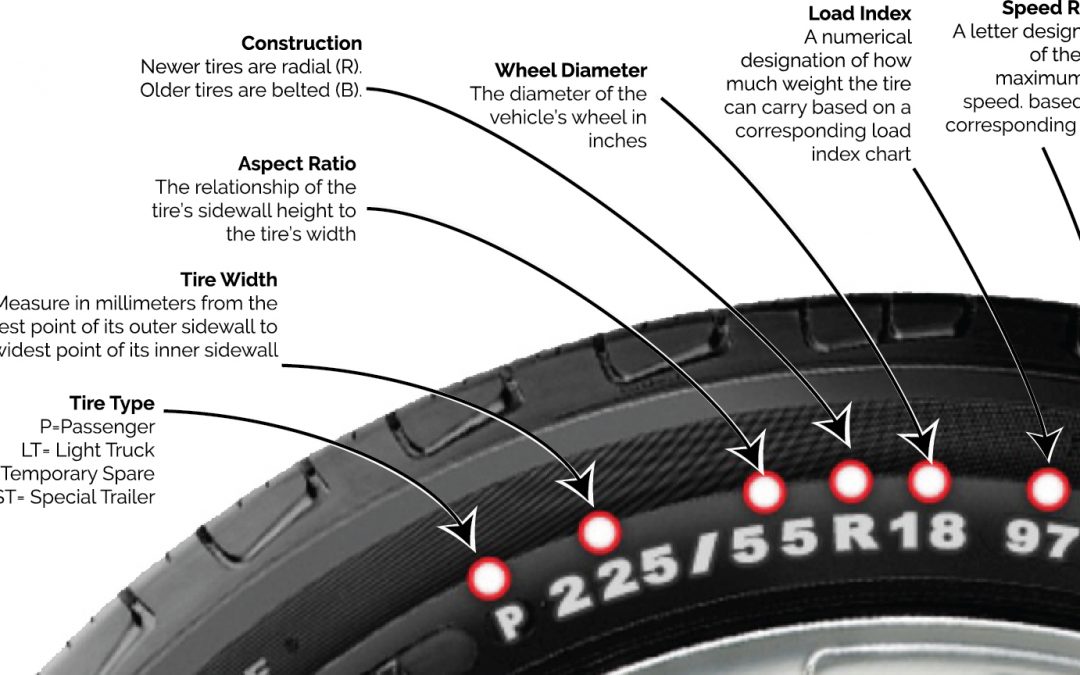The most important pieces of real estate on your car are those four small contact patches that grip the road: your tires. Those few square inches of rubber determine just about everything. Tires harness the engine's power, allow the brakes to do their job and determine how successfully a car will go around a corner regardless of whether they’re pulling into a parking stall or screaming into a high-speed sweeper.
Yes, tires carry an enormous burden. That thin doughnut of round and black is a complex assembly of cables, rubber and polymers, all molded into a highly engineered profile. It's then mounted onto a wheel and, of course, inflated with air to give it shape and definition. The manufacturers behind your vehicle, tires and wheels worked together to carefully engineer an optimum combination of grip, road feel, ride quality, noise control and tire wear.
In America, “bigger is better” has been the prevailing trend over the past couple decades. “22s on Porsche trucks” used to be a flex worth rapping about—now it’s a factory option. Big wheels aren’t just the domain of performance enthusiasts looking to fit larger brakes and tires anymore. Sometimes they simply look cool, especially with the taller dimensions of a modern-day car. Just think of how strange a 2020 Mazda Miata would look wrong with the 14-inch stock wheels from its early 90s counterpart. From a design perspective alone, it just wouldn’t work.
Yet there are also practical, everyday reasons why you may want to swap your car’s tires and wheels, too. Some drivers now want to buck the trend of larger, heavier wheels whose low-profile tires are more expensive to replace and don’t offer much cushion on rough roads. Picking up a spare set of wheels and tires to use during the summer or winter is popular in colder climates as well. Why ruin a nicer set of wheels with road salt and grime if you don’t have to?
Bigger is not always better.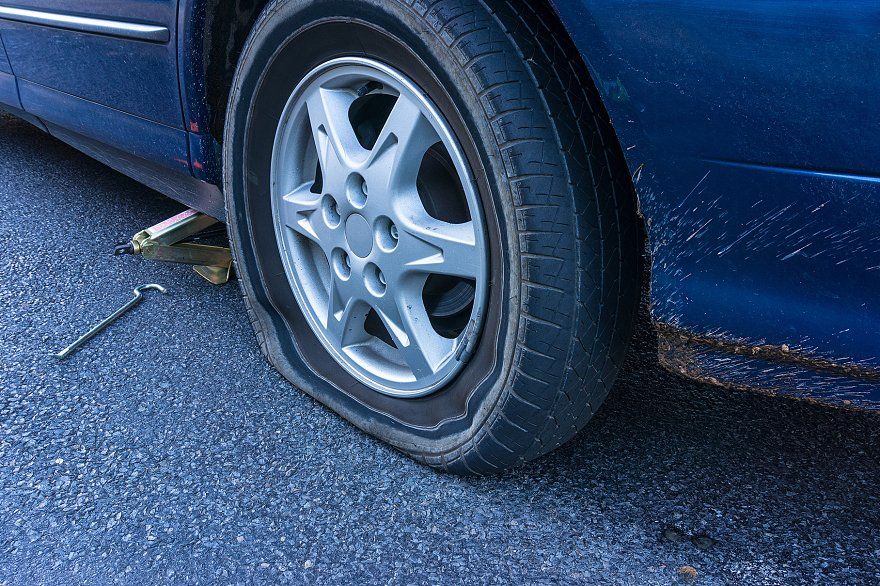 There's a sizing sweet spot that provides better grip and those head-turning looks without compromising your vehicle's original engineering. So, let's get some basics down before you upgrade to new rolling stock.
There's a sizing sweet spot that provides better grip and those head-turning looks without compromising your vehicle's original engineering. So, let's get some basics down before you upgrade to new rolling stock.
Universal History Archive//Getty Images
The first known wheels were made of wood, despite what Fred Flintstone's granite-shod convertible would have you believe. Automobiles even used wooden carriage wheels for quite a while. Increased power and weight soon outstripped wood's capabilities, and wheels were upgraded to steel, either in a stamped, welded dish or a lighter hub, spoke and rim design. Lightweight steel-spoked wheels lingered until the 1950s, especially on nimble foreign sports cars, but larger American cars needed the stronger stamped and welded wheels.
Steel's weight penalty led racers and enthusiasts to explore magnesium—a metal as strong as aluminum, but even lighter.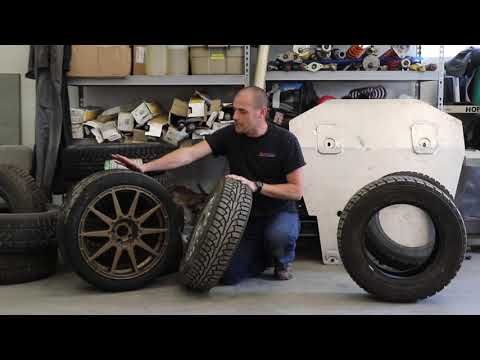 Unfortunately, pure magnesium corrodes very easily unless it's properly sealed and can even catch fire in an accident. Magnesium wheel fires are still singled out in firefighting courses today, as taking a water hose to a burning magnesium wheel only makes it burn more intensely. These earlier magnesium wheels didn’t get much use outside of racing because of these on-road liabilities.
Unfortunately, pure magnesium corrodes very easily unless it's properly sealed and can even catch fire in an accident. Magnesium wheel fires are still singled out in firefighting courses today, as taking a water hose to a burning magnesium wheel only makes it burn more intensely. These earlier magnesium wheels didn’t get much use outside of racing because of these on-road liabilities.
What some old-schoolers call "mag" wheels today are actually a safer, more stable magnesium alloy or more frequently, an aluminum alloy that’s been painted or chromed. Beyond these alloys, there are now ultra-lightweight carbon-fiber wheels, but those are still far more expensive than an alloy set. For now, most wheel upgrades involve aluminum alloys.
One of the reasons why people opt for larger wheels and tires revolves around the contact patch—specifically, how much tire touches the ground at any given time. Maybe you’ve upgraded your engine for more power and now your tires break loose if you just look at them funny. You’re going to need more contact with the ground (and thus, more grip) in order to use that extra power for more than sick burnouts.
Maybe you’ve upgraded your engine for more power and now your tires break loose if you just look at them funny. You’re going to need more contact with the ground (and thus, more grip) in order to use that extra power for more than sick burnouts.
There are two ways to increase the size of the tire's contact patch: make it longer or wider. A longer patch of tire tread means that the tire's overall diameter increases. This works better on a four-wheel-drive truck, but if you increase the diameter of the tire on most passenger cars, you’ll have problems.
First, there’s the obvious issue. The tire can rub other parts of the car, like the wheel well.
Secondly, because the radius of the overall tire is larger, the car’s effective gearing gets taller, which robs it of acceleration. Gear ratios are usually written like “4.10:1.” The higher the first number is, the more that gear multiplies the input torque that ultimately spins your wheels.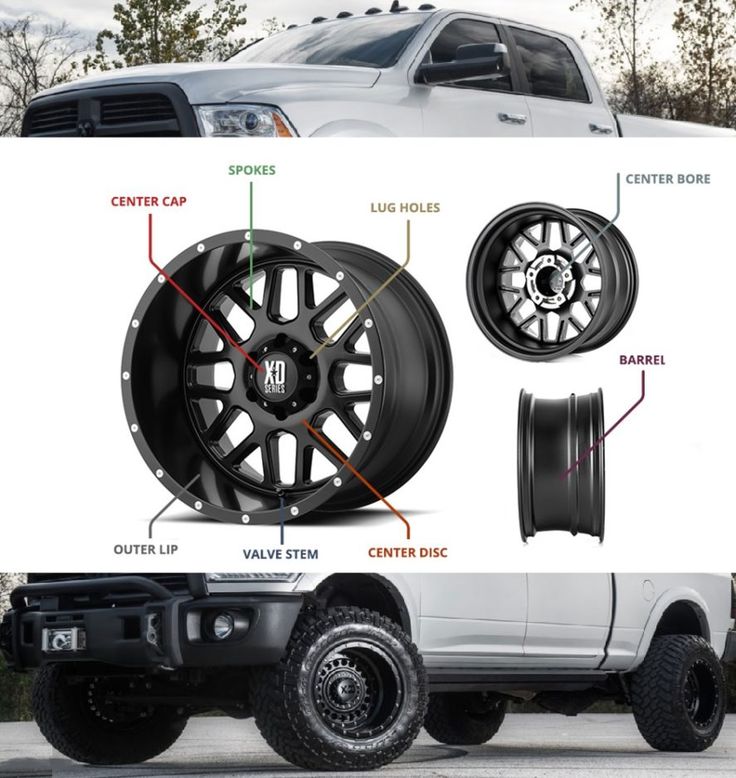 Problem is, it takes longer for a larger diameter tire to complete one rotation.
Problem is, it takes longer for a larger diameter tire to complete one rotation.
Popular Mechanics/Ash Bartholomew
So, if your gearing is set up to rotate the wheels a certain number of times with a smaller-diameter tire, using that same gearing with a larger-diameter tire won’t rotate that tire as many times. Your 4.10:1 gear ratio may effectively be a “taller” 3.75:1 ratio because of that larger tire diameter, thus slowing you down. (There are handy calculators online for how a change in tire size affects your gear ratio if you’re serious about modifying your car’s gearing to compensate for this.)
Furthermore, your car’s anti-lock brake system isn’t calibrated to handle the increased angular momentum from all that extra spinning weight concentrated near the rim and it can malfunction as a result.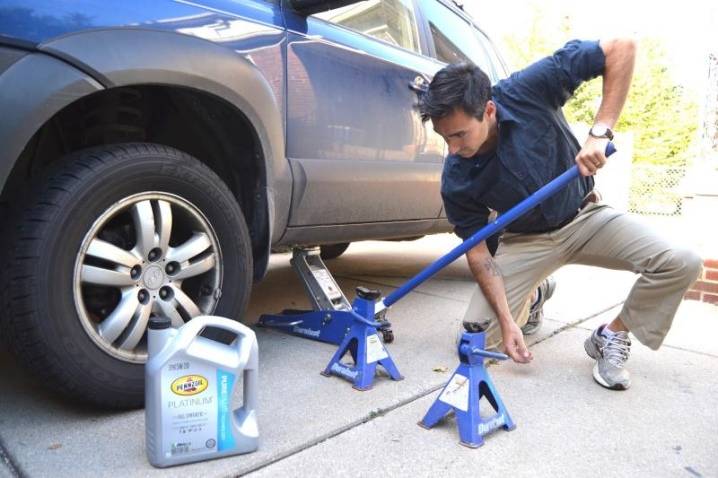 You may not notice this until you hammer the brakes going into a slippery corner and slide off into a hedge.
You may not notice this until you hammer the brakes going into a slippery corner and slide off into a hedge.
So, on street cars, we customarily go wider with wheels and tires to increase the size of that contact patch. While you still need to ensure that wider tires will fit inside your wheel wells without rubbing, it’s common to add an inch of width to your wheels—for example, going from a 7-inch-wide rim to an 8-inch-wide one. That allows a wider tire to be mounted.
While you’re adding width to your wheels, you may also want to increase your wheels’ diameter. Then you can fit a tire with a wider tread and a lower profile for better handling. Thanks to the lower profile, the overall diameter of your wheel and tire combo stays pretty close to what it was before. Adding an inch in wheel diameter but subtracting that inch from the sidewall of the tire is called a Plus 1 upgrade as it’s pretty common. Similarly, we can usually go even lower in profile with a Plus 2 (for example, going from 16- to 18-inch wheels) or Plus 3 (16- to 19-inch) upgrade on most vehicles without running into a problem.
The same principle of changing an inch in wheel diameter but compensating for that inch in the height of the tire’s sidewall can be applied to downsizing your wheels as well. Keeping the overall diameter of your tires the same also means that you won’t notice any changes in your speedometer. Speedometers usually calculate your car’s speed by measuring how often your wheels are spinning. If a significantly different tire diameter causes your wheels to turn more or less frequently than it used to, your speedometer won’t give you an accurate speed.
There are reasons to be cautious about up-sizing your wheels and tires, especially with less powerful cars. Wider tires have more rolling resistance than their skinnier counterparts, which can negatively affect your fuel economy. More mass from heavier wheels can have negative consequences as well. As noted, their extra momentum can mess with safety features like ABS, but the extra weight also requires more power to move, which wrecks both your fuel economy and your acceleration.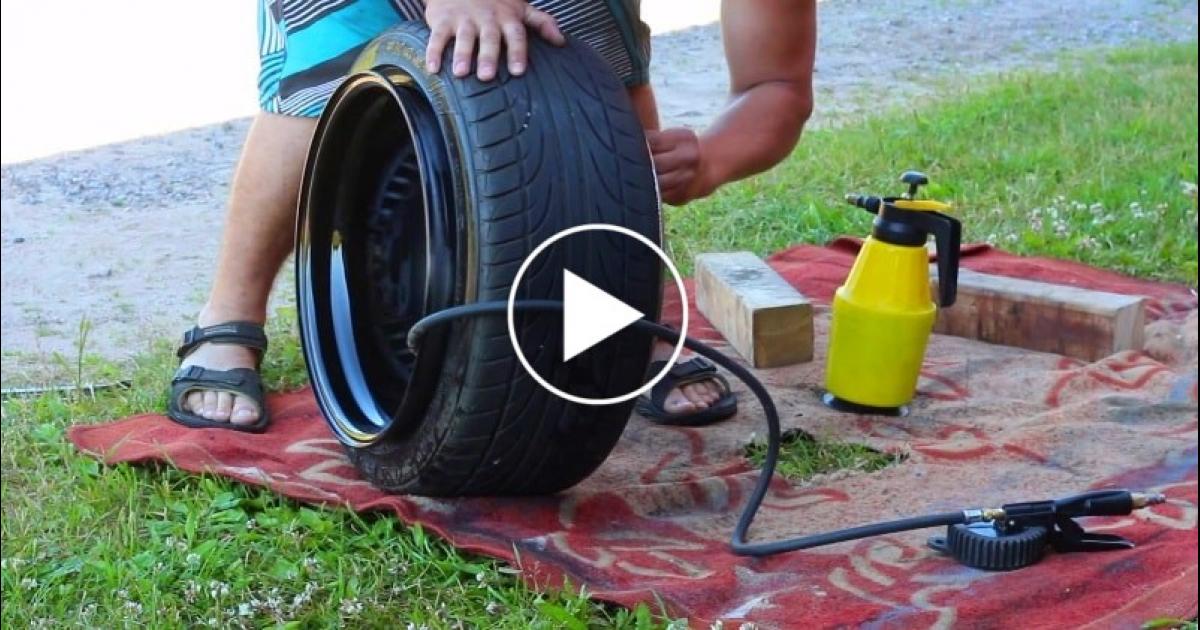 Those wheels’ extra unsprung weight can also overwork your factory springs and shocks.
Those wheels’ extra unsprung weight can also overwork your factory springs and shocks.
As the aspect ratio of a tire drops—that’s the lower profile we’ve been talking about—a number of things change. Shorter sidewalls are stiffer and less compliant, so the tread itself moves less. This in turn improves grip and enhances road feel through the steering wheel. That's good!
A 1-in.-larger rim diameter and 1-in.-wider rim width is a “Plus 1” size upgrade; in this case, the 16-in. rim below. Plus 2 and 3 are shown, slightly exaggerated, on the 17- and 18-in. wheels. Choose a tire that’s close to stock height.
Popular Mechanics/Ash BartholomewHowever, the contact patch becomes more square than oval. That increased width of the tire on the pavement makes the tire more prone to hydroplaning on wet roads. Even at modest speeds, there’s a higher chance for the rubber to ride on top of the water instead of piercing through the water to the pavement.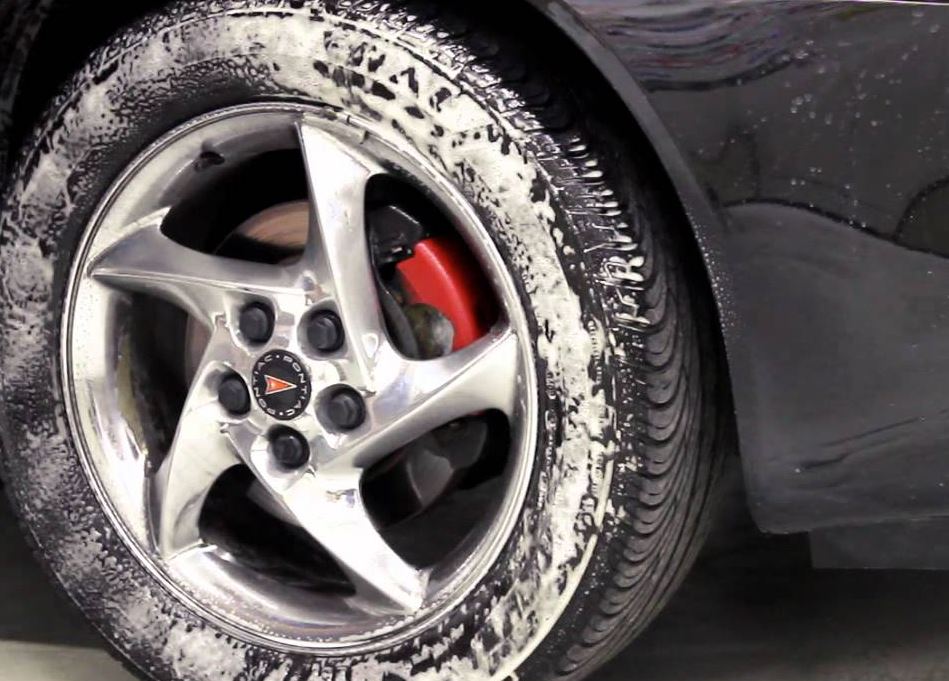 This reduces grip to nearly zero, which is a Very Bad Thing.
This reduces grip to nearly zero, which is a Very Bad Thing.
At the same time, ride quality suffers. One major downside to shorter sidewalls is the increased risk of wheel damage. Those short sidewalls put the rim of the wheel much closer to potholes and curbs.
A short, wide contact patch has more contact area on the road, but that's only if the wheel remains perpendicular (or nearly so) to the ground. The suspension's job has just gotten tougher. A taller, more compliant sidewall deflects more, and thus, has an easier time keeping the contact patch on the ground. With a wider patch and more grip, the car’s body rolls more, lifting the inner part of the tread off the pavement and reducing its grip. Without returning the suspension, handling can actually suffer.
It’s All About GeometryThere’s one more thing you need to be careful with when shopping for new wheels and tires: how does it all fit?
Many cars use a centering hub, which is a raised center section of the hub that mates with a matching recessed part of the wheel. It's intended to keep the wheel precisely centered on the hub, more so than by just tightening the lug bolts. Some wheels may not fit this hub properly, requiring the use of a spacer or even a different wheel.
It's intended to keep the wheel precisely centered on the hub, more so than by just tightening the lug bolts. Some wheels may not fit this hub properly, requiring the use of a spacer or even a different wheel.
Furthermore, the new wheel has to have the correct offset to clear the suspension and brakes. The offset is the distance from the hub mounting surface and the wheel’s centerline, which is the middle point between the rims. It measures where the tire sits laterally from the hub of the wheel.
Popular Mechanics/Ash Bartholomew
If the rim is wider than stock, there may not be enough clearance to the ball joint or steering arm to permit half the extra width to go inside the wheel well. It may even rub the fender! Worse yet, significant size changes can upset steering geometry and overstrain wheel bearings. (As with effective gear ratios, there are online calculators that show you exactly how a change in wheel and tire size affects your steering geometry and handling.)
(As with effective gear ratios, there are online calculators that show you exactly how a change in wheel and tire size affects your steering geometry and handling.)
Our advice: Purchase a proven wheel-and-tire combo specifically designed for your vehicle, or go to a shop that specializes in modifying your kind of ride. Places like Tire Rack offer myriad wheel and tire combos based on your specific car and its dimensions. That being said, when wheels come in designs ranging from cute teddy bears to gladiator-like protruding wire hubs, we can’t blame anyone for wanting something more custom.
If you make significant changes to your wheels, you follow it up with the appropriate changes to the rest of your vehicle so that everything works safely as it should.
Stef Schrader
Stef Schrader routinely breaks and attempts to take project cars on race tracks. She enjoys fancy cheeses, good coffee, fast Porsches, traveling to new places and rare, weird cars.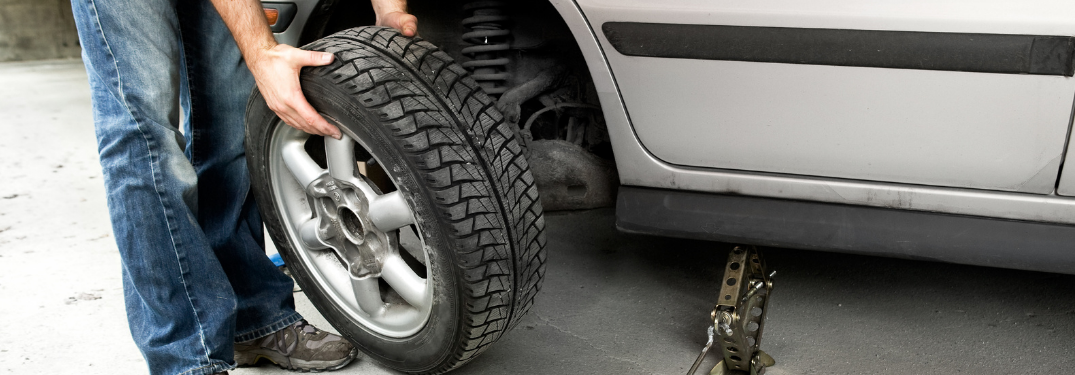 She lives with a large collection of Fisher-Price Puffalumps and an overloaded parts shed.
She lives with a large collection of Fisher-Price Puffalumps and an overloaded parts shed.
If you’re wondering, “Can I use bigger tires on my car?” the answer is usually, “It depends.” Before you buy that new set of wheels, there are a few things you should know about putting bigger tires on a car.
While there are many benefits of bigger tires, prospective buyers should consider how bigger tires affect vehicle stability, safety, fuel economy, and speedometer accuracy — among other essential pros and cons of upsizing tires on trucks and SUVs.
At Tires Plus, we always recommend that you follow your vehicle manufacturer’s recommendations for tire selection and sizing. However, some motorists choose to slightly deviate from their vehicle’s original tire and wheel size for performance or style purposes.
Plus-sizing involves installing wheels with a larger diameter with a low-profile tire that’s the same diameter as the original — meaning it doesn’t impact ground clearance or the speedometer.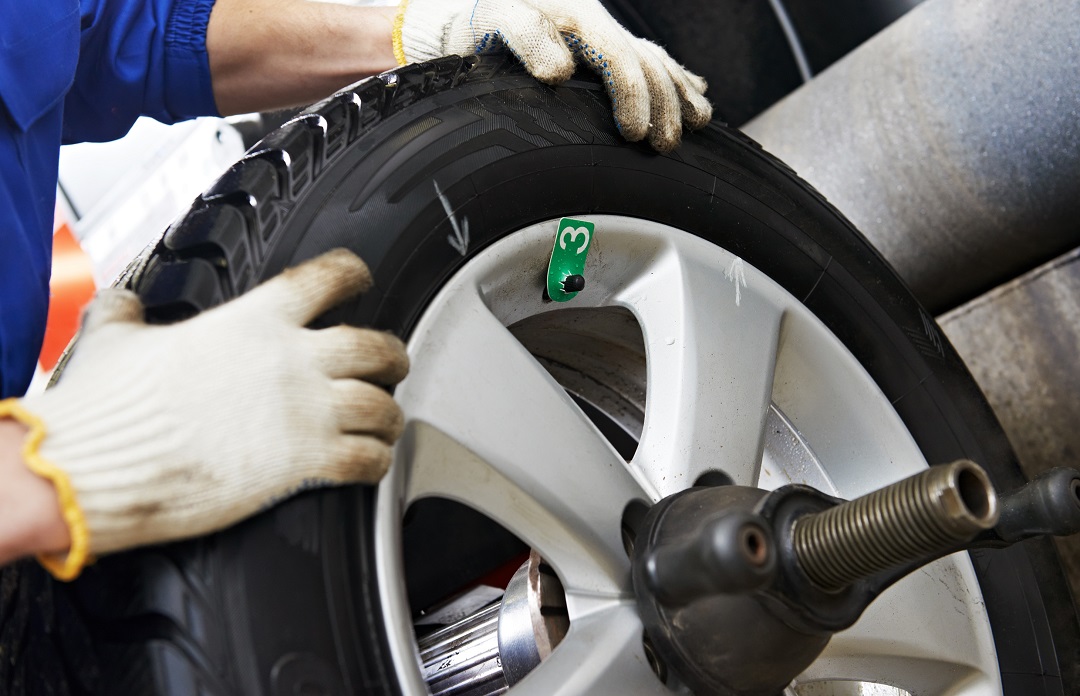 In some cases, plus-sizing helps enhance a vehicle’s cornering and handling performance capabilities. However, in most situations, this is purely a stylistic choice. Our expert technicians can help give you guidance on if and how your vehicle’s tires should be plus-sized.
In some cases, plus-sizing helps enhance a vehicle’s cornering and handling performance capabilities. However, in most situations, this is purely a stylistic choice. Our expert technicians can help give you guidance on if and how your vehicle’s tires should be plus-sized.
Up-sizing involves deviating from the manufacturer-recommended tire size by installing tires with a larger diameter on wheels that are the same size or bigger. Up-sizing impacts the speedometer, meaning it requires reprogramming the vehicle’s computer.
Additionally, larger tires weigh down the wheel assembly — which may affect fuel economy and place unnecessary stress on the powertrain and brakes. If planned or installed incorrectly, up-sized tires may also rub the wheel well, brake calipers, or vehicle frame, potentially wearing down any parts they grind against.
At Tires Plus, we generally recommend against up-sizing your vehicle’s tires.
It's best to follow your vehicle manufacturer’s guidelines for tire selection and sizing, as right-sized tires help support proper stability and performance. If you decide to change your tires from their original size, make sure that the new tires meet or exceed your vehicle’s load-carrying capacity at the proper inflation pressure, and consider if the taller tires will impact any Advanced Driver Assistance Systems.
If you decide to change your tires from their original size, make sure that the new tires meet or exceed your vehicle’s load-carrying capacity at the proper inflation pressure, and consider if the taller tires will impact any Advanced Driver Assistance Systems.
Additionally, check beforehand that the larger tires you want are compatible with your wheels and rims’ size and that they don’t rub against the calipers or sides of the wheel well.
When you put bigger tires on your car, SUV, crossover, or light truck, you raise the vehicle’s clearance — increasing body roll and load transfer, which may negatively impact your car’s balance and speed.
Perhaps the most significant benefit of larger tires is the extra distance it creates between your car’s undercarriage and the ground. This is particularly important for off-roading enthusiasts who need that extra space to clear rough terrain.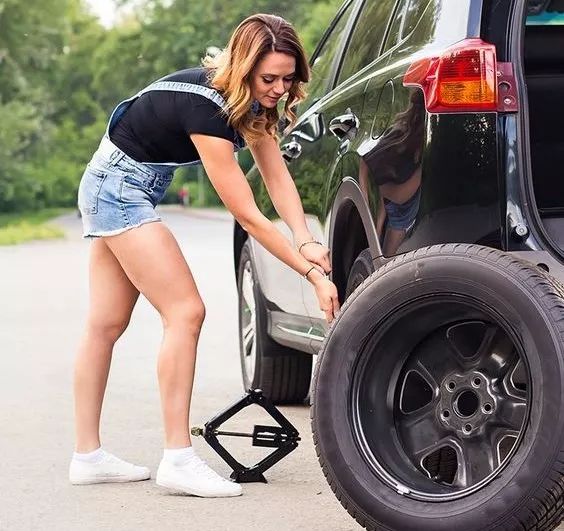
Higher clearance also helps drivers see farther both on and off the road. Depending on your needs, upgrading tire size can mean installing massive 40-inch tires that can traverse boulders or merely adding a few extra inches of diameter.
Up-sizing your truck’s tires is more complicated than just installing larger tires on the wheels and calling it a day. In some cases, you will have to install new wheels that are compatible with your larger tires. If the tires you want are too big for your wheel well, you may have to install a lift or leveling kit to make room for them, which could affect getting proper wheel alignment services in the future.
While new rims and lift kits are often a desirable and trendy addition to bigger tires, they also represent additional costs that you must factor into your decision!
Additionally, a set of bigger tires means you will need to adjust both the speedometer and possibly the tire pressure target data to accurately reflect the correct speed, the corresponding correct miles driven, and any target PSI changes with your new wheels.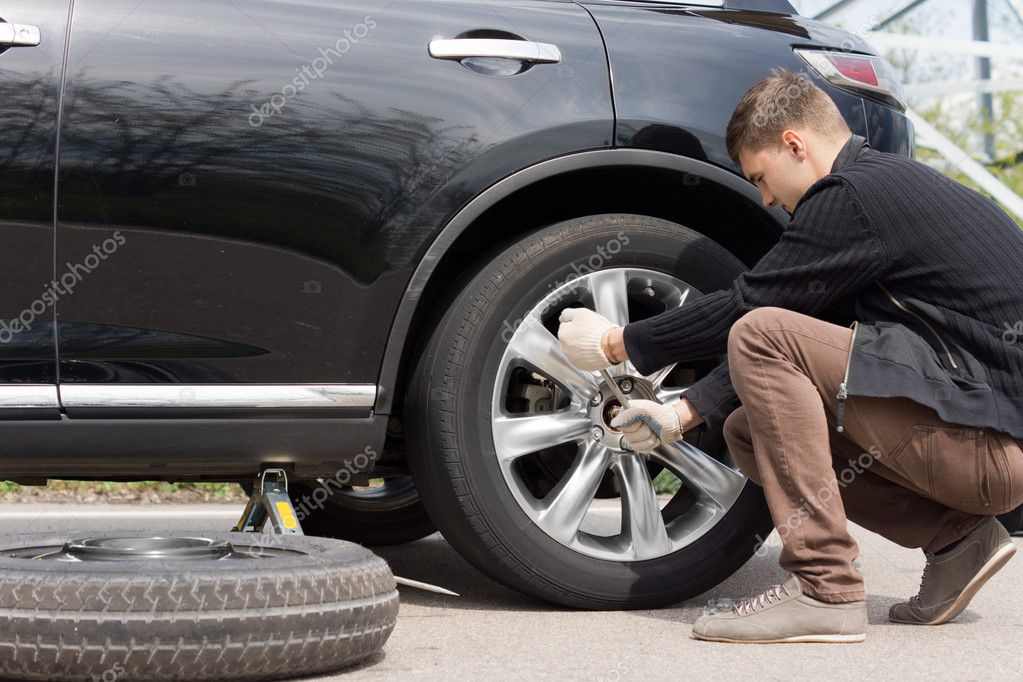
There isn't much to change with the TPMS besides swapping it to the new wheels and relearning positions if needed. Only some vehicles allow access to the Electronic Control Module (ECM) to change the tire size in the computer so it reflects on the odometer and speedometer.
Some believe that, because bigger tires result in higher ground clearance, they offer superior off-road handling. However, finding all-terrain or max-traction tires in the right size for your truck or SUV can also benefit its performance off the beaten path. With deeper and broader treads to grip uneven and loose terrain, max traction tires are tough enough to go wherever the trail takes you!
All that extra tire can seriously lower fuel economy. Bigger, more aggressive tires are great for backcountry trails but can be noisy and inefficient on paved roads. A deeper and wider tread can increase your vehicle’s rolling resistance, which means your car has to work harder to overcome the “stickiness” of all that extra traction.
Bigger tires — usually accompanied by bigger rims and higher suspension — are a popular trend among truck drivers. While some people want the off-roading advantages that come with bigger tires, sometimes the big wheels are all about style points. Upgrading your tire size is one way to customize the look and feel of your driving machine.
Naturally, increased height from larger tires means you have a higher center of gravity. This changes the handling of your vehicle by increasing body roll and load transfer. In some cases, you may experience less stability when braking and cornering — especially if traveling at high speeds. Additionally, any changes in ride height and in some alignment angles may result in the Advanced Driver Assistance Systems needing recalibration.
Style points aside, some manufacturer’s will explicitly advise against increasing your vehicle’s tire sizes. Additionally, certain automakers will even void your vehicle’s warranty if you decide to modify its suspension with larger tires and a lift kit.
Additionally, certain automakers will even void your vehicle’s warranty if you decide to modify its suspension with larger tires and a lift kit.
Putting bigger tires on your car will affect your vehicle's average miles per gallon (MPG). There are several reasons larger tires lower fuel economy.
First, bigger tires are usually much heavier. Adding a set of four big and heavy tires to your vehicle will add a lot of new weight. That added weight can hurt your car’s acceleration and expend more fuel. It can also put more strain on your brakes to slow down the vehicle.
Second, wider tires may stick out from the wheel well instead of staying in line with your truck or SUV. This can make your car less aerodynamic and increase fuel usage.
Lastly, as previously mentioned, wider and more aggressive tires have a larger contact patch with the road that can increase rolling resistance.
Modifying your car with larger tires will alter the accuracy of your speedometer.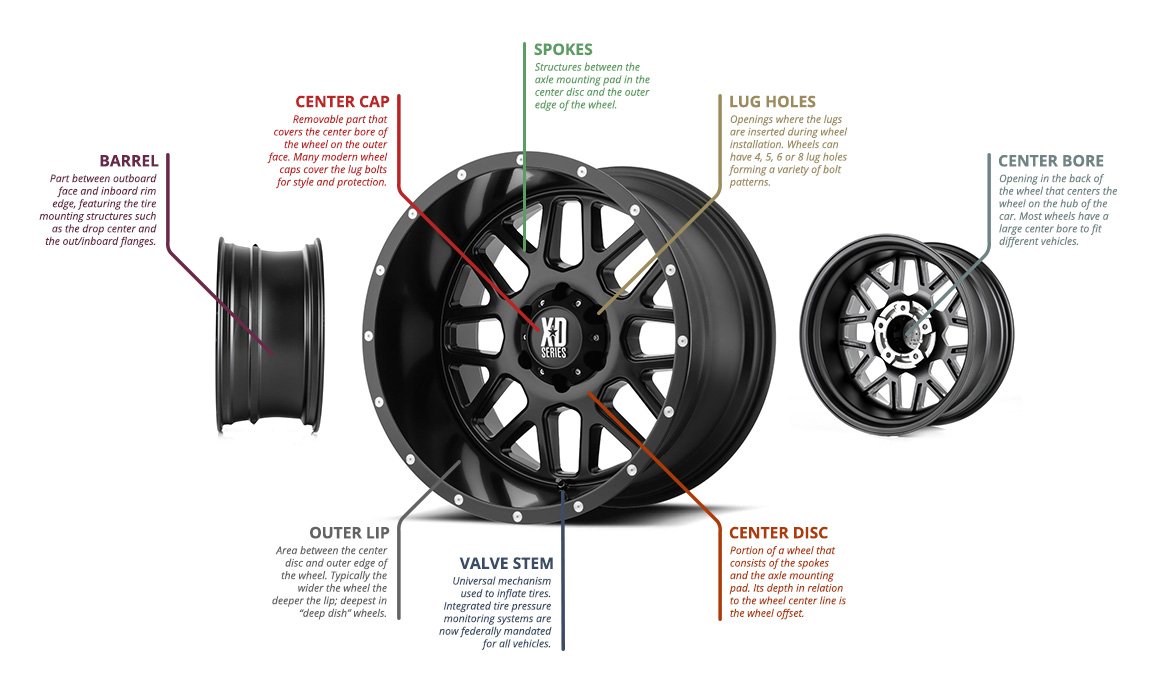 This is because part of the speedometer’s read-out is measured by the revolution of your tires, based on the tire’s circumference.
This is because part of the speedometer’s read-out is measured by the revolution of your tires, based on the tire’s circumference.
When you install bigger tires, if the speedometer is not recalibrated to the new tires’ increased circumference, it will not display the correct speed. You will need a technician to either adjust the speedometer gear or reprogram your vehicle’s computer to compensate for the change in tire size if applicable.
Want to upgrade your vehicle’s tires but not sure where to start? Head to a Tires Plus in your city to talk to our experts about plus-sizing, off-roading tires, and everything in between. We'll help you pick out the right size, type, and tread style for your make and model so you can get the tires you need for the driving experience you've always wanted.
Many car enthusiasts ask this question, but not everyone decides to deviate from the manufacturer's recommendations.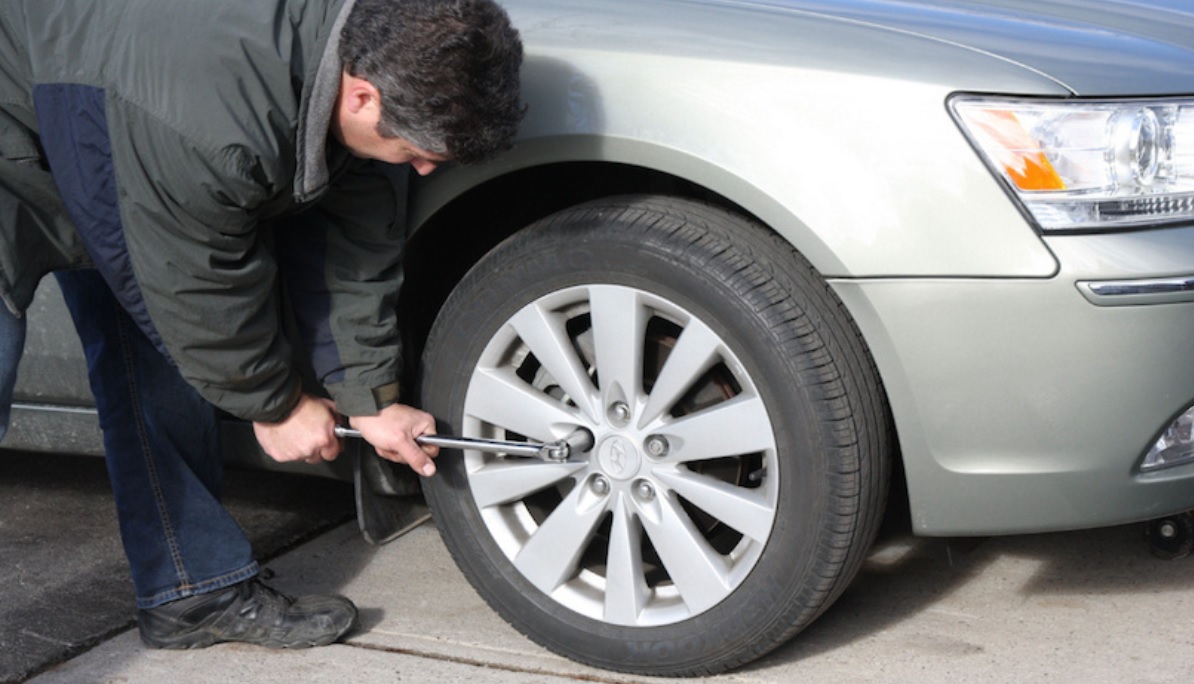
Replacing regular car wheels is one of the simplest types of tuning. Why is this needed? There are many options. The most common reason is not liking the look. Let's say you want the wheels to look spectacular. To do this, the disk must be larger in diameter. Well, or you bought a used car, and the design of the rims categorically does not suit you. Perhaps you liked some specific wheels, but their dimension is not included in the list recommended by the car manufacturer. You can also change the wheels for reasons of practicality. But how can the installation of such wheels turn out in the future? Let's figure it out.
First, let's remember the key parameters of the wheel.
Main dimensions of the tire: D - outer diameter of the tire; H is the height of the tire profile; B - tire profile width; d - landing diameter of the wheel rim (tire).
traffic police prescribed requirements for converted cars
Next, we'll tell the story on the example of tires for a very common size on B-class cars, 185/65 R15.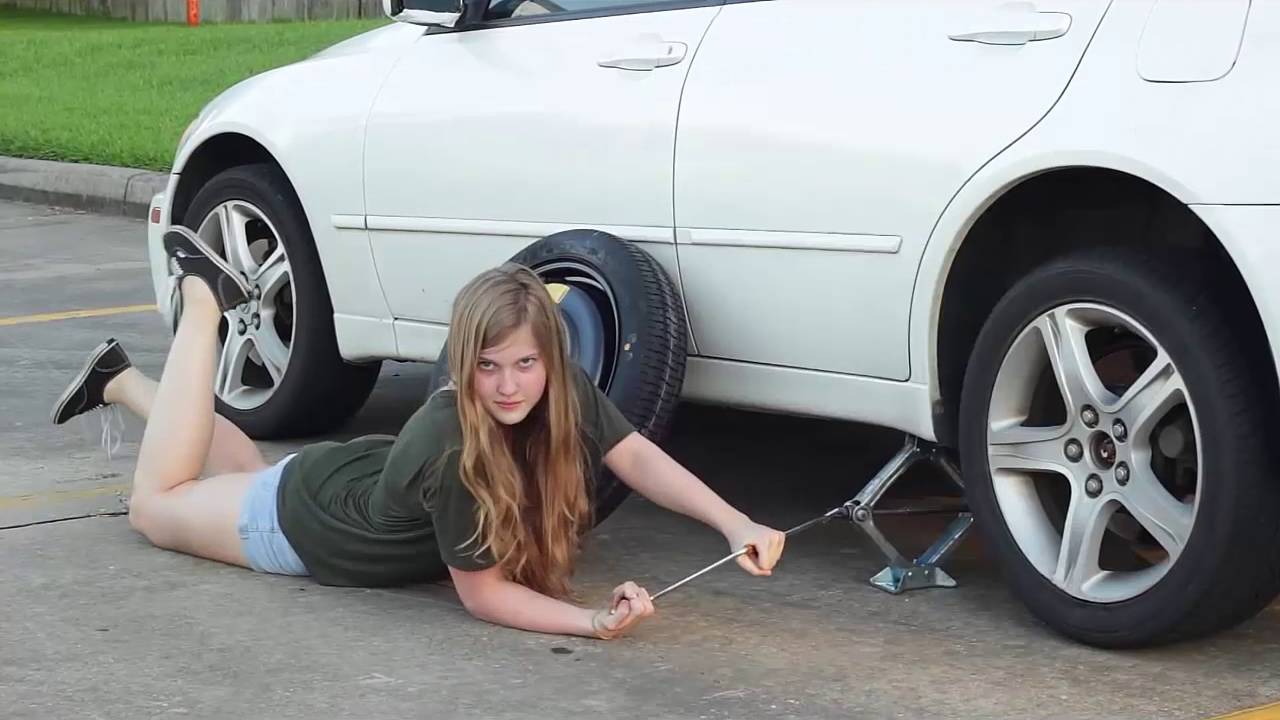 These are the popular Rio, Solaris, Logan, Largus, etc. By the way, let me remind you what all these designations mean.
These are the popular Rio, Solaris, Logan, Largus, etc. By the way, let me remind you what all these designations mean.
So, there are several ways to move away from the size of the standard wheel .
While maintaining the standard size of the rim, we increase the width of the tire profile while maintaining the percentage of height to width. In our example, we get 195/65R15. It is important to know here that all cars are designed for the installation of snow chains with a size of at least 12 mm. Indeed, in some European countries, driving on mountain roads without chains is prohibited, and not a single self-respecting manufacturer will make a car so that it cannot be operated in the mountains of France or Switzerland. Therefore, an increase in the width of the tire profile is permissible in most cases by up to 24 mm. At the same time, the car will become a little softer on the move, and wider tires will improve braking performance.
At the same time, the car will become a little softer on the move, and wider tires will improve braking performance.
Wheel care: checking wheel and tire products
Keep the rim the same and increase the percentage of tire profile height to width to 70. In our example, we get 185/70 R15. The outer diameter of the wheel increases by 20 mm, which is quite acceptable (remember the reserve for installing chains). Everything would be fine, but in our particular example, the factor intervenes that tires of this size are produced mainly for commercial vehicles and they are too rigid and expensive to install on a passenger car. However, in other dimensions, the situation may be different.
The story of a friend's car is quite indicative. He bought a Kia Rio with a 1.6 engine and a 6-speed automatic. The regular wheels of the car had a size of 185/65 R15. The owner drove through the summer season and was not happy with the car's stiff suspension and insufficient ground clearance. Then he decided to change the behavior of the car, not by tuning the springs with shock absorbers, but by working with the wheels. In preparation for the next summer season, he used forged wheels with a diameter of 14 inches, completely matching the mounting dimensions.
The owner drove through the summer season and was not happy with the car's stiff suspension and insufficient ground clearance. Then he decided to change the behavior of the car, not by tuning the springs with shock absorbers, but by working with the wheels. In preparation for the next summer season, he used forged wheels with a diameter of 14 inches, completely matching the mounting dimensions.
The previous generation Kia Rio was equipped with 15-inch wheels in the base, but to make the car softer, the owner installed 14-inch tires with 195/70 R14 tires.
Driving Tire Test - measuring braking distances in hot and cold weather
However, disc diameter reduction is very rare. Much more often it happens that the owner chooses wheels one or even two sizes larger. And "wraps" them in low-profile tires. At the same time, the overall dimensions of the wheel remain almost unchanged or grow within acceptable limits.
Typical example of a low profile tyre.
Tire pressure: your norm
It's a different story when a car owner decides to install wider disks. Some people like it when the wheel protrudes a little beyond the arch. Please note that changing the dimensions of the wheel and tire can significantly increase the weight of the wheel assembly. Such weighting will negatively affect the life of the suspension elements and even the body, since large unsprung masses can cause resonant vibrations that the suspension is not designed for structurally. It is also important to remember such a parameter as wheel offset.
Wheel offset is the distance between the plane of symmetry of the rim and the surface adjacent to the vehicle hub. From left to right in the diagram are shown: negative offset, zero and positive.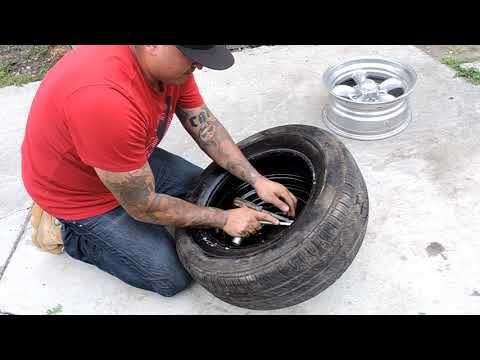
Those who like to change the offset of the rims, as a rule, tend to place the wheels wider. The aesthetic component of such changes is controversial, but the resource of the suspension elements will certainly decrease.
| Of course, it is possible to stretch narrow and inexpensive tires on disks that look more like solid sections of pipes with flanges, but the deformation of the tire carcass will soon render it unusable. You don't ride a lot of these. It is certainly possible to pull narrow and inexpensive tires onto rims that look more like solid sections of pipes with flanges, but the deformation of the tire carcass will soon render it unusable. You don't ride a lot of these. | Even large crossovers, which in comparison with sedans seem to be a kind of bumpkins, when you install low-profile tires begin to manage at least “good”. Even large crossovers, which in comparison with sedans seem to be a sort of bumpkins, with the installation of low-profile tires begin to manage at least “good”. | On the utilitarian Sobol, a tuning enthusiast installed discs that significantly increased the track. Guaranteed curious views of others, as well as a reduced resource of wheel bearings and shock absorbers. On the utilitarian Sobol, a tuning enthusiast installed discs that significantly increased the track. Guaranteed curious views of others, as well as a reduced resource of wheel bearings and shock absorbers. |
| PLASS | Lessine |
| Clerence increase . On our roads, every millimeter of ground clearance counts. If the bottom of the car is 5-10 mm further from the potholes, then there is less chance of damaging it on a bad road. | The wheel may touch body parts. If the width and diameter of the wheel grow no more than 24 mm from the maximum wheel size recommended by the manufacturer, then this problem is not terrible for you. You can't put chains on after that. |
| Economy improvement. Economy improves slightly on country roads, especially on vehicles with gearboxes that have few gears (4 or 5). | Vehicle roll increase. Yes, the roll will increase a little, due to the fact that the center of mass is now slightly higher. In practice, this means a slightly lower limiting rearrangement speed. |
| Change the speedometer and odometer. Regular instruments always overestimate the readings. You can check with GPS. And with new, slightly larger wheels, the readings will come in line with reality. Plus or minus you decide. Still, such a discrepancy is made primarily for security reasons. | Derating. The new wheels are a little harder for the engine to turn, and they themselves are a little heavier. |
| Reducing the offset of the discs (when the wheels protrude further out of the wheel arches) provides a wider track, which improves the lateral stability of the machine. | The wide disc is easily damaged by when touching a curbstone. In addition, if the width of the disk is much larger than the nominal one, the tire carcass does not work correctly. This results in increased wear of the tire . |
| In most cases, looks more aesthetic and catchy. | Protruding wheels overload the wheel bearings and make the difficult to drive. It is worth getting the front wheel on the roughness of the road, as the steering wheel literally pulls out of your hands. |
It is convenient to use a tire calculator for calculations.
Custom wheels are prohibited by law. Therefore, any experiments with the dimensions of tires or wheels are illegal. An exception is if the new dimension is allowed to be installed by the manufacturer. However, in reality, not everything is so scary: if the rims on your small car are not welded to a width of 12 inches, if the diameter is not 19and more than inches, then such wheels will not arouse the interest of traffic police officers. But with obtaining a diagnostic card, problems will already arise.
Boiled discs may be of interest to traffic police officers, because the use of such discs is a direct intervention in the design of the car, which is prohibited. In this case, you can try to convince the traffic cop that you "get to the place of repair in compliance with the necessary security measures."
In conclusion, I would like you to share what changes in tire and rim sizes you have applied to your cars, and what you think it has resulted in.
These tips will help you change tires properly. We will talk about the advantages and disadvantages of replacing the basic rubber sizes with alternative ones.
Tires are replaced in several cases, for example:
The most important criteria to consider when changing tires:
door sills).
2. Vehicle manufacturers allow wheel outer diameter variations ranging from 2% to 3.5%. Thus, if it is necessary to install discs of a larger diameter, the ratio of the width to the height of the profile should be reduced in order for the absolute dimensions of the wheel to change within the normal range.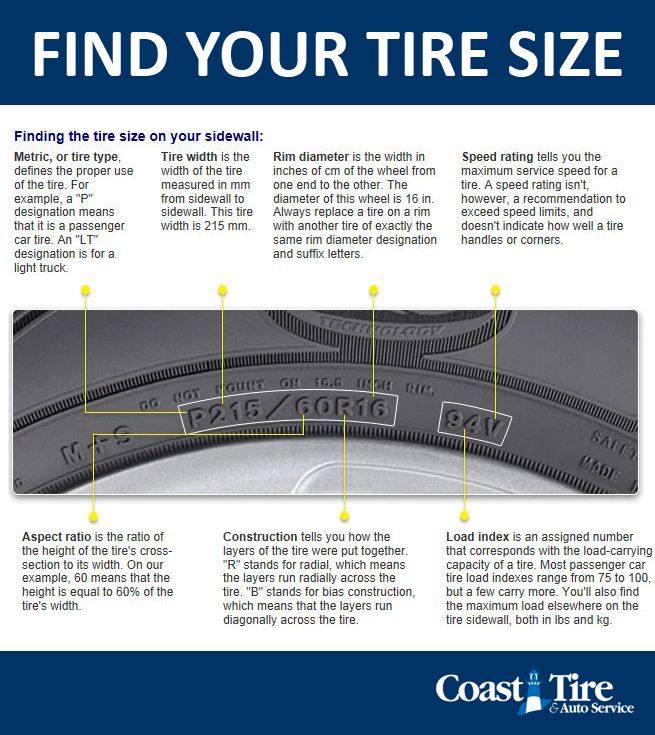
3. Also, before making changes to the chassis design of your car, you should remember that the manufacturer guarantees the appropriate running parameters of the vehicle, provided that the basic wheel sizes are used.
Benefits when fitted with larger tires:
 This modification will significantly improve the efficiency of the braking system.
This modification will significantly improve the efficiency of the braking system.
Disadvantages when choosing larger tires:

In order to calculate the range of possible interchangeable sizes, it is necessary to know the allowable nominal and actual dimensions of the wheel diameter as a whole. Wheel replacement options for your car can be found in the next section of the website , or calculated using a special formula below:
Wheel replacement options for your car can be found in the next section of the website , or calculated using a special formula below:
1. Basic (recommended) outer diameter of the wheel
2. Nominal rim diameter
3. Difference (subtract the nominal rim diameter from the outer diameter)
4. Add an average of 3% to the difference, we get the required value of the nominal tolerance.
Reducing the size of the rim
The installation of smaller wheels, motorists resort mainly in winter. The calculation applies the same principles as discussed in the formula above. However, it is worth checking the compatibility of the size of the brake disc, caliper in relation to the smaller rim. There is an opinion that a smaller wheel width contributes to better traction in winter, since it provides more pressure per square centimeter of the contact patch.
And finally, remember that the declared technical characteristics of the car specified by the manufacturer are true, provided that the recommended wheel and tire sizes are used.